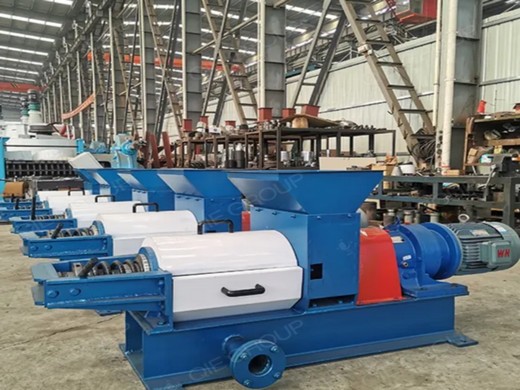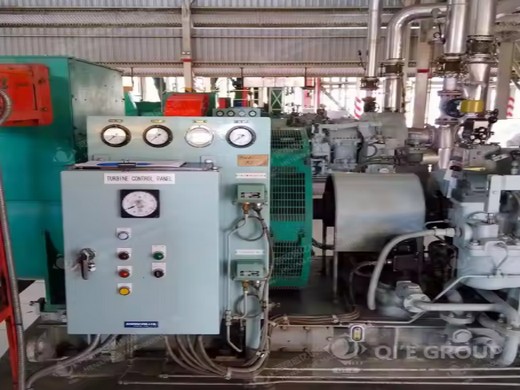Evaluating oil palm fresh fruit bunch processing
Three routes of oil palm fresh fruit bunch (FFB) processing in Nigeria namely, industrial, small-scale and traditional were compared by means of determining fruit losses associated with each route. The fruits that are not recovered after each process were hand-picked and quantified in terms of crude palm oil (CPO), palm kernel (PK), mesocarp fibre (MF) and palm kernel shell (PKS). The energy
Methyl esters were produced by transesterification of palm oil with methanol in the presence of a catalyst (KOH). The rate of transesterification in a batch reactor increased with temperature up to 60°C. Higher temperatures did not reduce the time to reach maximal conversion. The conversion of triglycerides (TG), diglycerides (DG), and monoglycerides (MG) appeared to be second order up to 30
Production of crude palm oil through
The present study investigated a combined process of pretreatment using microwave and solvent extraction to mill crude palm oil, with no introduction of water or steam. High oil yield was obtained from fresh palm fruits through microwave pretreatment in a 42 L, 1000 W and 2450 MHz microwave oven; and followed by hexane extraction.
resemble conventional crude palm oil and crude palm kernel oil. The leached oil during microwave pretreatment has 6.3% lauric acid, while the subsequently solvent extracted oil has 1.5%. Factors affecting the oil quality were investigated and duration of the microwave pretreatment is the major attribution to poor oil quality. The duration has to
The Palm Oil Industry From The Perspective
The palm oil industry in Malaysia particularly is evolved dramatically since the last three decades and hence produced varieties of products such as crude palm oil, palm kernel oil, palm kernel cake, oleo-chemical as well as new bio-fuel products to fulfil the demand from food and
Malaysia with over 12 million tons of crude palm oil(CPO) production in 2004[14]. About 60% of CPO production is ex-ported. Among the rest of it, around 30 % is used for cooking oil followed by 7% of oleochemical, 2% of soap and 1.6 % of margarine [10]. Fig. 1 shows the schematic material flow of palm oil industry in Indonesia. Palm oil
Oil Palm: The Rich Mine for Pharma Semantic Scholar
for palm oil production. In spite of the oil palm is not that of palm oil. Thus, palm oil production in Malaysia for Malaysian natural flora and originally obtained from West export purpose is found to be highly viable and oil Africa. Nowadays, Malaysia and Indonesia are account palm has become a favorite cash crop to replace other
Palm oil production is the most important agriculture-based industry in Malaysia. The number of the palm oil mills had increased tremendously, from about 10 in 1960 [1] to 453 in 2025 [2]. As a result, Malaysia has become the second-largest palm oil producer in the world after In donesia [3]. Basically, the oil palm fruits grow in bunches
Comparison of Traditional and Semi-mechanized Palm Oil
production. Keywords: Biodiesel, Crude palm oil, Renewable energy 1 Introduction1 Elaeis guineensis Jacq. is cultivated in the tropical and subtropical region of the World including Indonesia, Malaysia, Thailand, Columbia, Nigeria etc. Oil palm is believed
Universiti Sains Malaysia Engineering Campus was chosen as the study location, due to its vicinity to several odour sources including paper mill, palm oil mill and poultry farm. The odour survey was based on VDI 3940, to determine the level of odour intensity with the corresponding odour concentration measured using an infield olfactometer.
- Can a batch-based microwave technology be used in palm oil production?
- Further studies could include the scale-up of the batch-based microwave technique to a larger flow system more suited to the continuous nature of POME production at palm oil mills. European Commission (2015) Closing the loop—an EU action plan for the circular economy. European Commission, Brussels
- Can palm oil mill effluent be used as a feedstock for biodiesel synthesis?
- This investigation explores single-step biodiesel synthesis using palm oil mill effluent (POME) as a feedstock. Normally considered a waste product from the extraction process of palm oil, POME treatment is difficult and can cause significant environmental pollution if discharged directly into watercourses.
- How much palm oil is produced per tonne?
- It is estimated that for every tonne of crude palm oil produced, around 3 t of POME is also created leading to large volumes requiring treatment. For example, in 2009 43.8 million cubic metres of POME was generated in Malaysia alone [9, 12, 14, 15].
- Can palm oil be used as biodiesel?
- Normally considered a waste product from the extraction process of palm oil, POME treatment is difficult and can cause significant environmental pollution if discharged directly into watercourses. Fatty acids (FAs) present in POME were extracted and subsequently esterified in situ to FA methyl esters (FAME) suitable for use as biodiesel.
- Is palm oil bad for the environment?
- By 2007, palm oil had become the most consumed oil globally unseating soybean oil [5, 6]. Oil palm production has attracted much criticism on environmental grounds, with attention focusing on the prevention of further deforestation.






